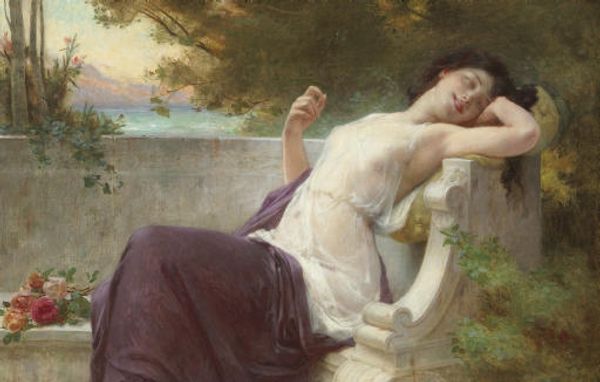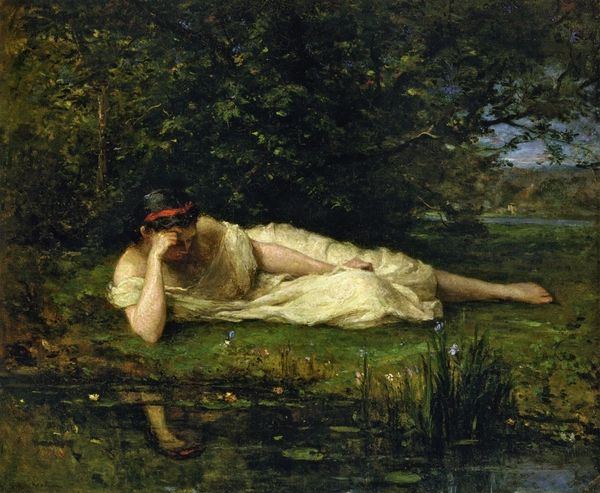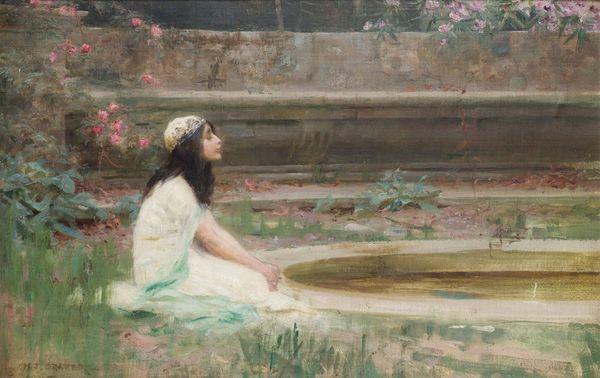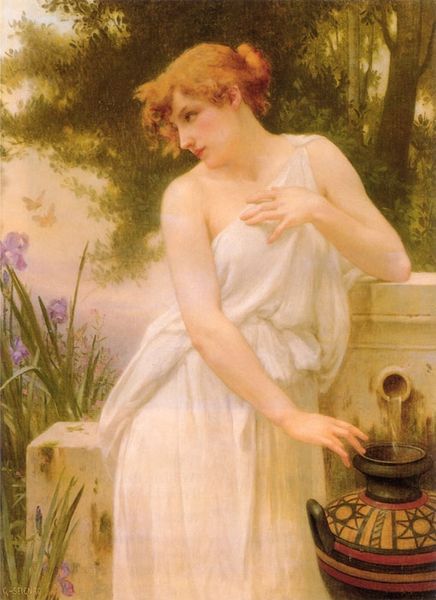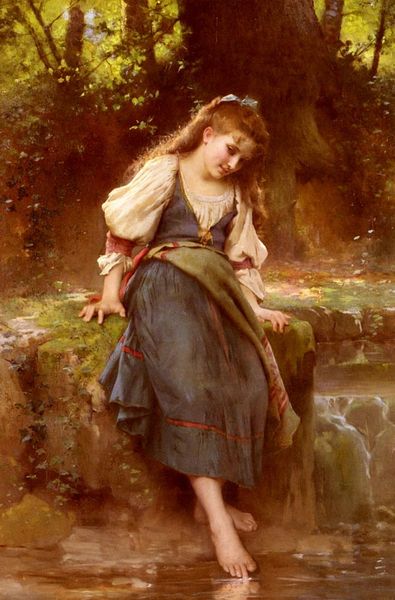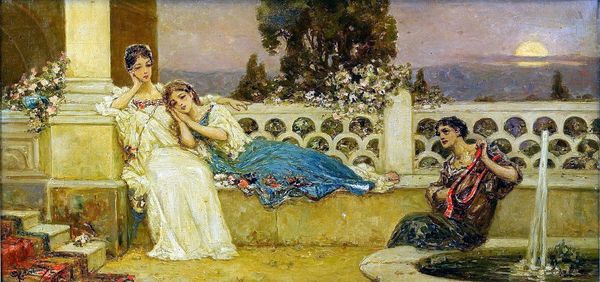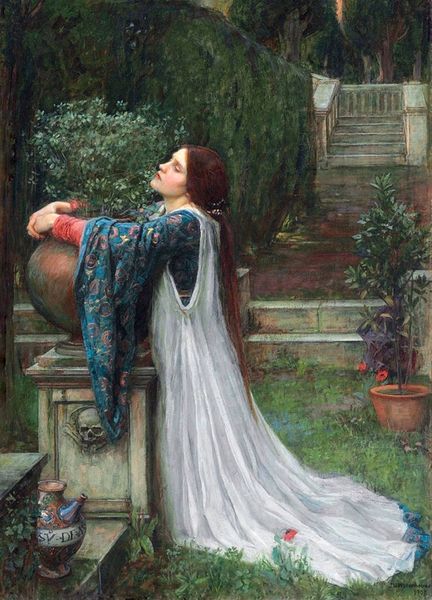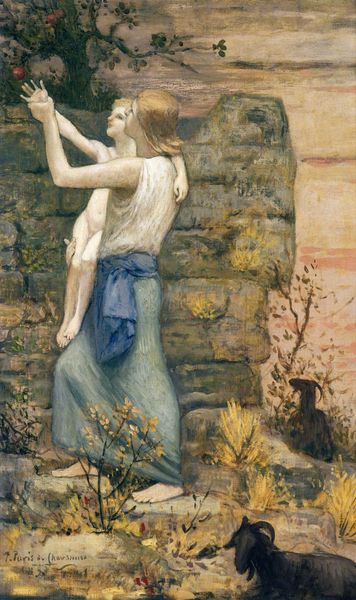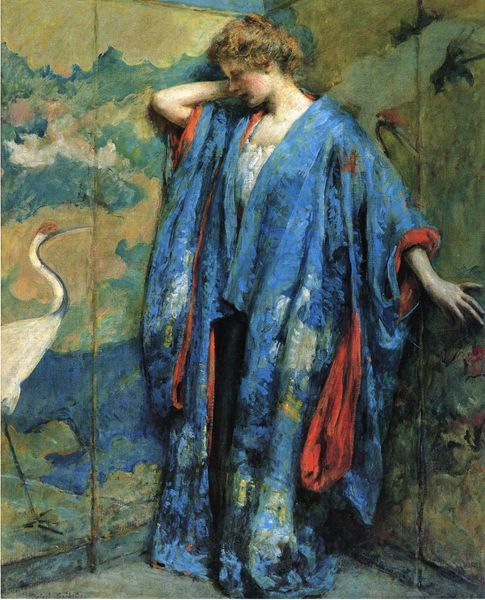
Copyright: Public domain
Curator: Wilhelm Kotarbinski painted “Afternoon Silence” in 1900 using oil paints. It presents a contemplative female figure in a landscape setting. My first impression is one of melancholy romance; the colours are muted and the scene feels heavy with unspoken emotion. Editor: Yes, there’s a sense of quiet drama. The woman, with her dark dress and pale complexion, almost blends into the shadowed architecture around her. The presence of that classic column brings immediately to mind imagery associated with mourning and recollection, perhaps from a memorial scene. Curator: Interesting, I see it too. The landscape and the classical architectural elements – particularly that weathered column overgrown with white roses – place the figure in a loaded historical context. The symbolism evokes both romanticism, with its focus on nature and individual emotion, and the academic style. Editor: I find the choice of flora around the woman intriguing. White roses have become fairly common signals for beauty and purity; yellow lilies often accompany themes of fragility and sorrow. This blend of purity and melancholy in nature adds a poignant, unspoken narrative to the painting. Curator: The way Kotarbinski stages the scene suggests a calculated representation. These carefully positioned elements seem to want to suggest something of women's status in this period and her limited social activity due convention at the time. The column appears like an erected monument for her grief. Editor: Indeed. This picture evokes an idealised past which can only ever be retrieved imperfectly, even artificially, as art. I noticed how her dark dress emphasizes the passing of a golden time and signals longing. She gazes so sadly over sunlit waters to her lost youth and future. Curator: Ultimately, the painting reflects a fascination with the intersection of history, nature, and individual emotion, all filtered through the conventions of the period's art world and gender politics. Editor: Agreed. It’s a moving portrayal of stillness, a perfect rendering of an afternoon silence that speaks volumes about memory and sentiment.
Comments
No comments
Be the first to comment and join the conversation on the ultimate creative platform.

